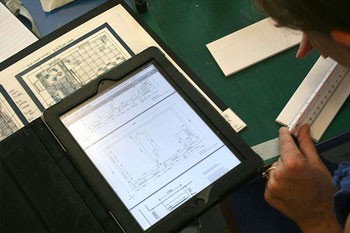Who Designs Tool's Concert Lighting
The Lighting Designer's Job
 Lighting designers know how to make the best use of the subtle and powerful medium of light, creating effects that can be changed at will to match the mood of the action.
Lighting designers know how to make the best use of the subtle and powerful medium of light, creating effects that can be changed at will to match the mood of the action.
At its most basic, stage lighting functions to make the actors and their environs visible to the audience. But it can also be used to:
- Evoke the appropriate mood
- Indicate time of day and location
- Shift emphasis from one stage area to another
- Reinforce the style of the production
- Make objects on stage appear flat or three dimensional
- Blend the visual elements on stage into a unified whole
The Designer's work
The lighting designer begins by reading the script to be produced noting the type of light it calls for in each scene. Designer and director share their ideas about how light could be used to enhance the production concept at their first meeting. Early meetings with the set designer are also important because the set and lighting designers must collaborate on how to achieve the desired "look" for the play. The plan for the set may influence the placement and direction of the necessary lighting instruments, so flagging any potential problems in this area as early as possible makes sense.
Lighting designers attend rehearsals to get a feel for the lighting cues and to plan how to light the actors as they move from place to place on stage. When the blocking is set, the lighting designer can start to work out which lighting instruments will be used and where each one will be located.
Planning tools
The planning tools lighting designers use include:
- Paintings and photos showing the mood and style of specific lighting techniques and are gathered through research
- A lighting plot: a scale drawing of the stage and set as seen from above showing the planned layout of each lighting fixture to be used
- A vertical section plot: a cross-section of the stage and set drawn to scale showing the vertical sightlines and the height and position of each instrument
- An instrument schedule: a chart that lists each lighting instrument separately along with the details of its type, wattage, purpose, filter color, the dimmer it will be plugged into and the ciruit that will control it
- A cue sheet: a complete list of the various lighting effects the designer has planned for the show and when they occur.
Collaboration
The lighting designer will meet with the director and the design team (set, costume, and sound designers), to discuss the details of the set and the director's interpretation of the play. The set, costume and lighting designers also meet and work together to ensure the creation of a unified look and feel for the production. A lively exchange of initial ideas and first impressions helps clarify the steps that each person needs to take in this intensely collaborative process.
Once the show opens, the designer's work is essentially complete. Now it's normally the job of the stage manager and light crew to make sure that every aspect of the production runs just as the designer intended, time after time, until the production closes.
Typical Duties
- Collaborates with Director on establishing a lighting design
- Collaborates with Director, set and Costume Designer on a color palette
- Creates a lighting plot, ground and elevation plan
- Creates cue sheets
- Attends production meetings
- Attends first rehearsal and presents design concept
- Attends other rehearsals as available
- Coordinates rental of additional lighting equipment
- Attends load-in, lighting hang, lighting focus, level set, dress rehearsals, etc.
- Works within the production budget
Master Electrician
The Master Electrician is responsible for taking the Lighting Designer's lighting plot and making sure that all lighting units on the plot are hung in the correct locations and actually work. Coordinating the numbers of lights and circuits and allocating cabling, gels, and other accessories are the most important aspects of this role. In many theatres, the lighting designer often ends up sharing many of the typical ME roles, so the job gets done by both.
More Resources at Your Fingertips
AACT members have access to our Resource Library covering all aspects of theatre, plus member networking, discounts on theatrical products & services and on AACT festivals and conferences.
Click here for more on the benefits of AACT membership.
Who Designs Tool's Concert Lighting
Source: https://aact.org/lighting-designer
Posted by: parkerstol1959.blogspot.com

0 Response to "Who Designs Tool's Concert Lighting"
Post a Comment